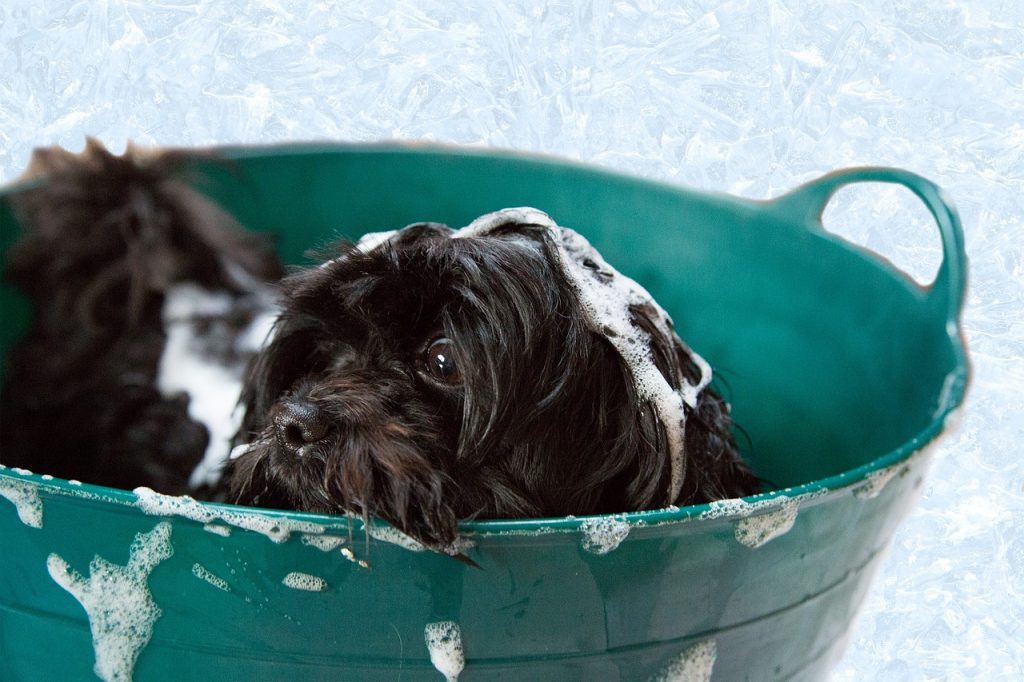Grooming is an essential aspect of pet care, as it not only promotes good hygiene, but also helps to strengthen the bond between you and your furry friend. While taking your pet to a professional groomer can be convenient, there are many benefits to grooming your pet at home. Not only can it save you time and money, but it can also make the grooming process less stressful for your pet. In this ultimate guide, we will provide you with all the information you need to groom your pet from the comfort of your own home. From essential tools to step-by-step guides, we’ve got you covered. So, let’s get started on creating a happy and healthy grooming routine for your furry friend!
Grooming Your Furry Friend at Home
If you’re a pet owner, you know that grooming is an essential part of taking care of your furry friend. Regular grooming not only keeps your pet looking their best but also contributes to their overall health and well-being. While professional grooming services are available, it can be expensive and time-consuming. That’s why many pet owners are opting to groom their pets at home.
Why Grooming Your Pet is Important
Grooming is not just about making sure your pet looks good, it also plays a crucial role in their health. Regular grooming helps to prevent and detect skin issues, matting, and parasites such as fleas and ticks. It can also help to maintain healthy skin and coat, prevent infections, and reduce the likelihood of painful ear infections.
The Benefits of Grooming Your Pet at Home
Save Money and Time
Grooming your pet at home can save you a lot of money in the long run. Professional grooming services can be expensive and can add up quickly, especially if you have multiple pets. By grooming your pet at home, you can save money and time by avoiding frequent trips to the groomer.
Bonding with Your Pet
Grooming your pet at home is an excellent way to bond with them. Your pet will feel more comfortable and relaxed with you than with a stranger. It’s also a great way to establish trust and build a deeper connection with your furry friend.


Improved Health and Hygiene
Regular grooming can help improve your pet’s health and hygiene. By keeping your pet clean and well-groomed, you can prevent skin irritations and infections, and keep their coat healthy and shiny. It can also help to reduce shedding and minimize the chances of hairballs.
Essential Tools for Grooming Your Pet at Home
Brushes and Combs
Different brushes and combs are suited for different types of coats. For long-haired pets, you’ll need a slicker brush, while medium-haired pets require a pin brush. Short-haired pets can be groomed with a curry brush or a glove brush.
Nail Clippers and Scissors
Nail clippers and scissors are essential tools for keeping your pet’s nails trimmed and tidy. It’s important to use the right tools and techniques to avoid hurting your pet.
Shampoo and Conditioner
Using the right shampoo and conditioner for your pet’s coat type is important to keep their skin and coat healthy. Make sure to choose a product that is free of harsh chemicals and formulated for pets.
Ear and Eye Cleaning Solutions
Keeping your pet’s ears and eyes clean is essential for their health. Ear and eye cleaning solutions are designed to remove dirt and debris from your pet’s ears and eyes, preventing infections and other health issues.
Step-by-Step Guide for Grooming Your Pet at Home
Bathing Your Pet
Before bathing your pet, brush their coat thoroughly to remove any mats or tangles. Use lukewarm water and a pet-friendly shampoo to wash your pet, making sure to rinse them thoroughly. Use a pet-friendly conditioner to keep their coat soft and shiny.


Brushing Your Pet
Regular brushing keeps your pet’s coat healthy and shiny. Use the appropriate brush or comb for your pet’s coat type and brush their fur gently to remove any tangles or mats.
Trimming Your Pet’s Nails
Trimming your pet’s nails is essential to prevent discomfort and injury. Be careful not to cut the quick, which is the pink part of the nail that contains blood vessels and nerves.
Cleaning Your Pet’s Ears and Eyes
Use a pet-friendly ear and eye-cleaning solution to keep your pet’s eyes and ears clean. Use a soft cloth or cotton ball to gently wipe the areas around the eyes and ears.
Grooming-Specific Areas of Your Pet
Different areas of your pet’s body require different grooming techniques. For example, you may need to trim the hair around their paws or their sanitary area. Make sure to use the appropriate tools and techniques for each area to avoid hurting your pet.
Special Considerations for Different Types of Pets
When it comes to grooming your furry friend at home, there are a few special considerations to keep in mind depending on the type of pet you have. Here are some tips for different types of pets:
Short-Haired vs Long-Haired Breeds
Short-haired breeds require less grooming than their long-haired counterparts. However, they still need to be brushed regularly to prevent shedding and maintain a healthy coat. Long-haired breeds, on the other hand, need to be brushed more frequently to prevent mats and tangles.
Small Pets
Smaller pets, like rabbits and guinea pigs, have specific grooming needs that may differ from dogs and cats. Rabbits, for example, need to have their nails trimmed regularly and their fur brushed to prevent hairballs. Guinea pigs need to have their coat brushed daily to prevent mats and tangles.
Senior Pets
Senior pets may require special grooming care due to age-related issues such as arthritis. They may need extra support during grooming to prevent discomfort or injury. It’s important to be gentle and patient when grooming senior pets to make the experience as comfortable as possible for them.
Common Grooming Challenges and How to Overcome Them
Grooming your pet at home can come with some challenges. Here are some common grooming challenges and how to overcome them:
Pet Anxiety and Fear of Grooming
If your pet is anxious or fearful of grooming, it’s important to take things slow and gradually introduce them to the process. Use positive reinforcement and treats to help your pet associate grooming with positive experiences. You can also try using calming aids like pheromone sprays or calming music.
Matted Fur
Matted fur can be painful and uncomfortable for your pet. To prevent mats, make sure to brush your pet frequently, especially if they have long hair. If your pet already has mats, you may need to trim them with scissors or clippers. If the mats are too close to the skin, it’s best to take your pet to a professional groomer.
Overgrown Nails
Overgrown nails can cause discomfort and even health problems for your pet. To prevent overgrown nails, make sure to trim them regularly. If your pet is nervous about nail trimming, start by touching their paws and nails and giving them treats to help them associate the experience with positive reinforcement.
Tips for Maintaining Your Pet’s Grooming Routine at Home
Maintaining your pet’s grooming routine at home can help keep them healthy and happy. Here are some tips for maintaining your pet’s grooming routine:
Regular Grooming Schedule
Establish a regular grooming schedule for your pet and stick to it. This can help prevent mats, tangles, and other grooming issues.
Proper Storage and Cleaning of Grooming Tools
Make sure to properly store and clean your grooming tools to prevent the spread of bacteria and other contaminants. Wash brushes and combs with soap and water and disinfect them regularly.
Monitoring Your Pet’s Health and Hygiene
Regular grooming can help you keep an eye on your pet’s overall health and hygiene. Look out for any unusual lumps or bumps, changes in fur or skin, or signs of discomfort during grooming.
Conclusion: Happy and Healthy Pet Grooming at Home
Grooming your pet at home can be a rewarding and bonding experience for both you and your furry friend. With a little patience and the right tools, you can help keep your pet looking and feeling their best. Remember to always prioritize your pet’s comfort and safety during grooming.In conclusion, grooming your pet at home is a simple and rewarding task that can benefit both you and your furry friend. By following this ultimate guide, you can ensure that your pet is healthy, clean, and comfortable, all while strengthening your bond with them. Remember to be patient and gentle throughout the process and to always prioritize your pet’s safety and well-being. With the right tools and techniques, you can create a happy and healthy grooming routine that your pet will enjoy for years to come.
FAQ
Do I need to groom my pet at home if I take them to a professional groomer?
While taking your pet to a professional groomer can be convenient, it is still important to groom your pet at home in-between grooming sessions. Regular grooming at home can prevent matting, reduce shedding, and promote healthy skin and coat. Additionally, it can help to strengthen the bond between you and your pet.
How often should I groom my pet at home?
The frequency of grooming your pet at home depends on the breed, coat type, and lifestyle of your pet. Generally, it is recommended to brush your pet’s coat and teeth at least once a week, trim their nails every 4-6 weeks, and bathe them every 3 months. However, some pets may require more frequent grooming, while others may require less.
What if my pet is anxious or fearful during grooming?
Grooming can be stressful for some pets, especially if they have had a negative experience in the past. If your pet becomes anxious or fearful during grooming, it is important to approach the grooming process slowly and patiently. You can also try using positive reinforcement, such as treats or praise, to help your pet feel more comfortable. If your pet’s anxiety persists, it may be helpful to consult with a veterinarian or professional animal behaviorist.
Can I use human shampoo on my pet?
No, it is not recommended to use human shampoo on your pet. Human shampoo is formulated for human hair and skin, which has a different pH balance than pet hair and skin. Using human shampoo on your pet can strip their skin of natural oils, leading to dryness, irritation, and other skin problems. Instead, use a pet-specific shampoo that is formulated for your pet’s skin and coat type.


